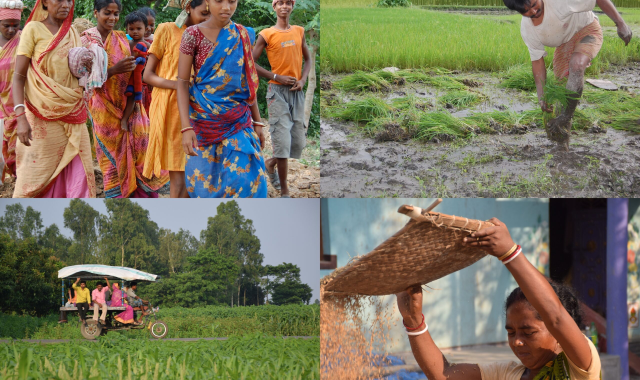In recent years, West Bengal's Agricultural Landscape has undergone a profound evolution, particularly in districts bordering Bangladesh. This transformation, characterized by a shift away from traditional wheat cultivation towards a diverse array of crops, marks a significant departure from conventional farming practices. The factors driving this transition are multifaceted and underscore the imperative for sustainability and resilience in Indian agriculture.
One of the primary catalysts for this agrarian shift is the emergence of the wheat blast disease in neighbouring Bangladesh. This fungal infection, caused by the Magnaporthe oryzae Triticum (MoT) fungus, devastated wheat crops and prompted a two-year ban on wheat cultivation in border areas of West Bengal, including Murshidabad and Nadia districts. Faced with the threat of crop losses and economic uncertainty, farmers were compelled to explore alternative crops that offered greater resilience against such diseases.

Moreover, the economic viability of alternative crops has played a pivotal role in driving this agricultural transformation. Farmers have increasingly recognized the profitability of cultivating crops like bananas, lentils, and maize, particularly during peak seasons. Stagnant wheat prices and concerns over water consumption associated with wheat cultivation have further incentivized the exploration of alternative crops that offer higher returns on investment.
This shift towards crop diversification is not unique to West Bengal; it reflects a broader imperative for India to embrace sustainable farming practices and promote agricultural resilience. The Green Revolution, while instrumental in boosting food production and alleviating hunger, inadvertently led to a decline in crop variety due to its focus on monoculture practices. India has lost over 100,000 traditional rice varieties since the 1970s, highlighting the urgent need to diversify crop cultivation patterns.
Crop diversification offers a myriad of benefits that extend beyond mitigating the risks associated with disease outbreaks and market fluctuations. By cultivating a variety of crops, farmers can enhance soil health, reduce dependence on chemical inputs, and promote natural pest control mechanisms. Moreover, diversification opens up new market opportunities, allowing farmers to tap into niche markets and emerging trends such as organic produce and biofuels.

Despite the promising prospects of crop diversification, several challenges persist. Market uncertainties, limited access to finance, and inadequate infrastructure for storage and transportation pose significant barriers to adoption for many farmers, particularly smallholders. Moreover, the entrenched dominance of staple crops like rice and wheat in Indian diets complicates efforts to promote diversified cropping systems.
To address these challenges and capitalize on the opportunities presented by crop diversification, concerted efforts are needed from both the government and the agricultural community. Government initiatives such as the Crop Diversification Programme and the Mission for Integrated Development of Horticulture play a crucial role in incentivizing diversification and providing support to farmers. Additionally, strategies such as agri-tourism, biofortification, and regenerative agriculture offer innovative pathways to promote sustainable diversification and ensure a resilient future for Indian agriculture.
In conclusion, West Bengal's agrarian shift towards crop diversity serves as a microcosm of India's broader imperative to embrace sustainable farming practices. By diversifying crop cultivation patterns, India can enhance agricultural resilience, improve soil health, and promote inclusive growth in rural communities. However, concerted efforts and targeted interventions are needed to overcome the challenges and fully realize the potential of crop diversification in India's agricultural landscape.

















